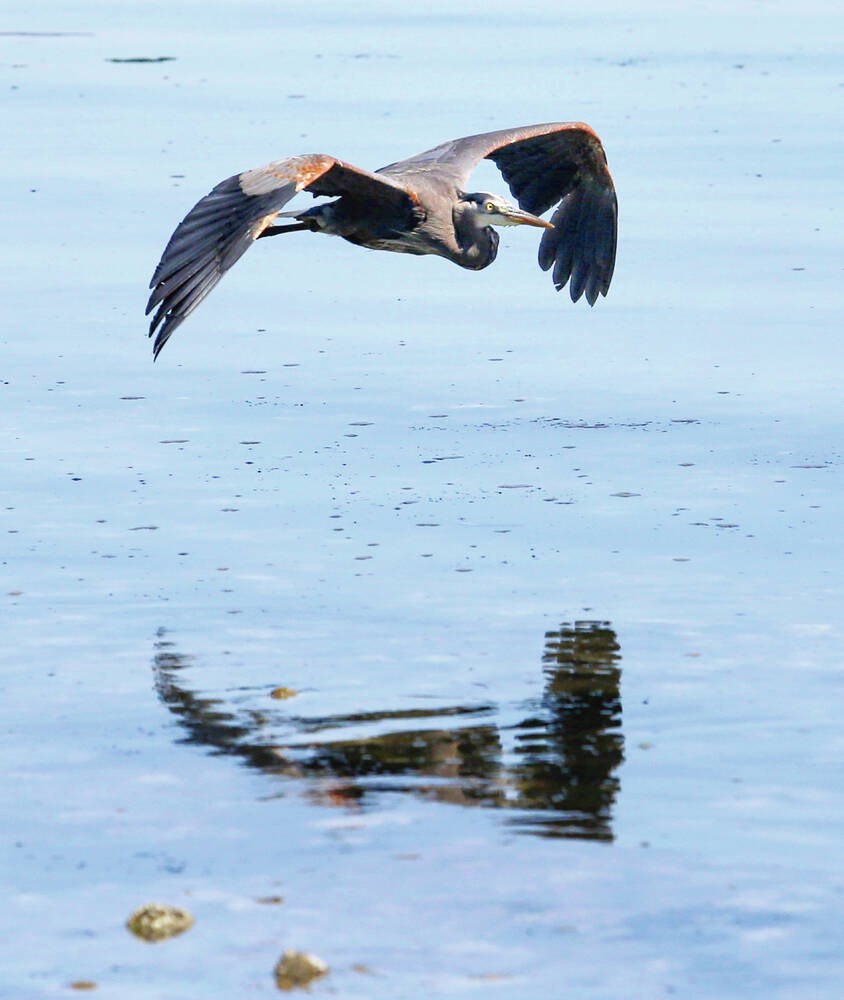During the past two years, people have hit the trails, visited parks and explored B.C. more often than ever before.
In spending more time outdoors, many familiarized themselves with the plants and critters they encountered, and documented them on online apps.
Many such citizen science apps exist, including made-in-B.C. Project SeaHorse and WhaleReport. But of all the social-network naturalist tools, iNaturalist and eBird are among the most popular. Both rely on observations and reports by the public and experts.
Launched 20 years ago by the Cornell Lab of Ornithology, eBird gathers information in the form of checklists of birds and archives it. It also offers tools to enrich contributors’ experiences. It allows birders to manage their species checklists, photos and audio recordings. It creates real-time maps of species distributions. It also alerts members when species have been reported nearby.
eBird Canada was the platform’s first regional portal, launched in 2006 by Birds Canada in collaboration with Cornell and Regroupement QuébecOiseaux. In addition to focusing on Canadian species, it provides a survey protocol designed for Canadian Important Bird and Biodiversity Areas.
In 2020, Canadians submitted more than 1.3 million species checklists to eBird— an increase of almost 35 per cent over 2019 — by more than 28,000 observers, which also increased by about 30 per cent.
Globally, eBird met other milestones during the pandemic, including its one-billionth bird observation in 2021.
While eBird is bird-focused, iNaturalist collects observations of all organisms — from pond scum to polar bears. Like eBird, however, the social network of naturalists, biologists and citizen scientists archives, maps and shares observations. Its single, global version allows for many “projects,” which can be restricted to regions (e.g., Vancouver Island), place types (ecological areas), time frames (a weekend bioblitz), or kinds of organisms (butterflies).
“iNaturalist is the most important development in biodiversity science in at least 100 years,” Brian Starzomski, Kate McKeown and John Reynolds wrote in the Friends of Ecological Reserves newsletter. “iNaturalist democratizes the collection of biodiversity information and engages everyone in helping to better understand nature.”
Starzomski, McKeown and Reynolds are among B.C.’s top iNaturalist observers, in part due to their involvement with the B.C. iNaturalist Project. This initiative by B.C. Parks, the B.C. Parks Foundation, the University of Victoria and Simon Fraser University encourages B.C. residents and visitors to upload observations of species encountered in B.C. parks and natural areas.
In 2020, iNaturalist noted both its one-millionth observer and its 50-millionth observation. Last year, the platform tallied observations of 333,000 species, or about one in six of the world’s described species. In B.C., contributors reported more than one million observations of more than 13,000 species in 2020.
Those observations are shared and put to use in research, to inform policy and to drive conservation priorities. Almost 1,500 studies have drawn on iNaturalist information, while at least 600 studies have used eBird data.
Scientists use the information to track biodiversity, as well as changes in species’ ranges, numbers, prevalence and behaviours over time. Some researchers draw on the data to track movement of invasive species. Some use the data to determine how climate change is affecting species migration and reproduction patterns. Others mine the data to pinpoint habitat changes.
Issues exist, however. Non-expert citizen scientists may misidentify species, lowering data quality. To help prevent this, experts review the uploaded, geo-referenced, time-stamped photos and may visit the place where the observation was made to verify the report.
The data is also biased. In a recent analysis of 31 million iNaturalist records, U.S. researchers found that, with most observers active during the day, on weekends during the spring and summer, and in or near urban areas, the species reported most often were also active during the day and likely to be seen in spring or summer and in urban areas. Most species typically were also easy to identify and photograph.
A UBC study reported similar results for eBird’s B.C. records.
Researchers need to account for them in their research. Some use the biases to inform how, where and when they focus their own species surveys to increase data from less-frequented areas, in less-popular times of day or year, and of lesser-known species, or to initiate campaigns to encourage people to focus on overlooked areas, timeframes and species.
As B.C.’s parks and trails beckon, we have an opportunity to continue contributing to the knowledge and understanding of the plants and critters we share our province with.
keiran_monique@rocketmail.com



